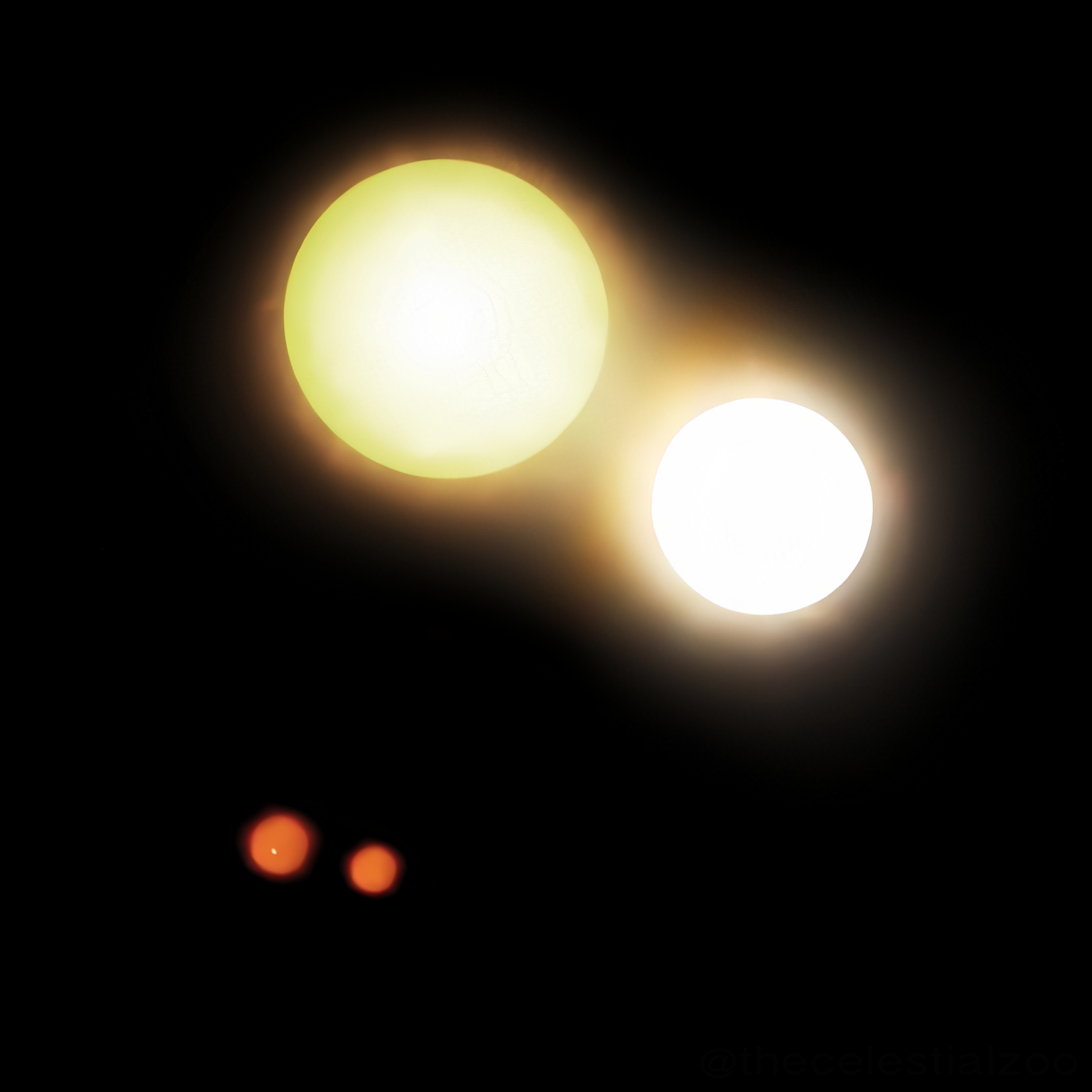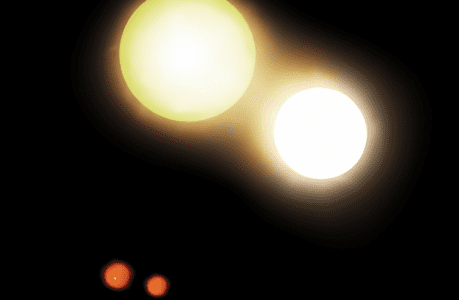Capella is one of the brightest stars in the night sky, and has been known to astronomers since ancient times. It is located in the constellation Auriga, which means “the charioteer” in Latin. Capella is a relatively close star, at a distance of around 42 light-years from Earth, and is visible to the naked eye from most parts of the world.
One of the most interesting things about Capella is that it is actually a binary star system, meaning that it is composed of two stars orbiting around each other. The two stars are both similar in size and mass to our own sun, and are separated by a distance of about 100 million kilometres.
Despite their proximity, the two stars in the Capella system have very different properties. One of the stars is a yellow giant, similar to our own sun, while the other is a smaller, cooler red dwarf. This combination makes Capella a unique and fascinating object for astronomers to study.
Capella’s properties have been studied in detail by astronomers using a variety of telescopes and instruments. They have found that the stars in the Capella system are in a very stable orbit, and are likely to remain so for many millions of years to come.
In addition to its scientific significance, Capella has also played an important role in mythology and folklore. In ancient Greece, it was believed to be the chariot of the god Apollo, while in some Native American cultures it was seen as a sign of the coming of spring.
Capella was not “discovered” as it is one of the brightest stars in the night sky and has been known to astronomers and stargazers since ancient times. However, the binary nature of the Capella system was first discovered in 1899 by American astronomer William Wallace Campbell.
Today, Capella remains a popular target for amateur astronomers and stargazers alike. With its bright, distinctive appearance and fascinating properties, it is a star that continues to captivate and inspire us.
Auriga
Auriga is a constellation located in the northern sky. Its name means “charioteer” in Latin, and it is often depicted as a chariot driver with a whip in his hand. Auriga is one of the 88 modern constellations recognized by the International Astronomical Union (IAU), and it is bordered by the constellations Camelopardalis, Perseus, Taurus, Gemini, Lynx, and Ursa Major.
Auriga contains several notable stars and deep sky objects. One of its most prominent features is Capella, which is one of the brightest stars in the night sky and is a binary star system composed of two stars orbiting around each other. Auriga also contains three open clusters visible to the naked eye: M36, M37, and M38, all of which are popular targets for amateur astronomers.
In mythology, Auriga is associated with several figures from ancient Greek and Roman culture. It has been identified with the charioteer of several gods, including Zeus, Apollo, and Hermes. In addition, Auriga has been associated with Myrtilus, the charioteer of King Oenomaus, who was killed after attempting to betray his master.
Overall, Auriga is a fascinating and important constellation that has played a prominent role in astronomy and mythology throughout history. Whether you are an amateur stargazer or a professional astronomer, there is always something new to discover and explore in this celestial region.
Binary stars
Binary stars are a type of star system that consists of two stars that orbit around a common centre of mass. These stars are gravitationally bound to each other, and their orbits can be circular or elliptical.
Binary stars are quite common in the universe, with as many as half of all stars being part of a binary system. They come in a variety of types, including close binary systems, where the stars are very close together and may even share an atmosphere, and wide binary systems, where the stars are far apart and may even be several light-years away from each other.
Binary stars are important objects for astronomers to study, as they can provide valuable information about the properties of stars and their evolution. For example, the period and shape of the orbit of a binary star system can be used to determine the masses of the stars and their distance from each other. In addition, the interactions between binary stars can lead to phenomena such as mass transfer, accretion disks, and supernova explosions.
Overall, binary stars are fascinating objects that provide insight into the workings of the universe. Whether you are an amateur astronomer or a professional astrophysicist, there is always something new to learn and discover about these intriguing celestial objects.
How can I find Capella
Capella is a bright star and can be easily seen in the night sky with the naked eye. Here are some steps you can follow to find it:
- Find the constellation Auriga: Capella is located in the constellation Auriga, which is visible in the northern hemisphere during the winter months. Auriga is easily recognized by its pentagon shape, and it is located between the constellations Taurus and Gemini.
- Locate the two bright stars: Once you have found Auriga, look for the two bright stars at the top of the pentagon. Capella is the star on the left, while the star on the right is called Menkalinan.
- Look for Capella’s distinctive appearance: Capella is a yellow-white star that is one of the brightest stars in the sky. It has a distinct appearance and is easily recognizable once you know where to look.
If you are having trouble finding Capella, try using a star chart or a smartphone app that can help you locate stars and constellations in the night sky. With a little practice and patience, you’ll be able to find Capella and many other fascinating celestial objects in the night sky.
why is Capella an important star
Capella is an important star for several reasons:
- Brightness: Capella is one of the brightest stars in the night sky, with an apparent visual magnitude of 0.08. This makes it a popular target for amateur astronomers and stargazers.
- Binary star system: Capella is a binary star system, which means it is composed of two stars orbiting around a common centre of mass. The two stars in the Capella system are similar in size and mass to our own sun, making it an important object for studying stellar evolution and the properties of stars.
- Proximity: Capella is relatively close to Earth, at a distance of about 42 light-years. This makes it a useful object for studying the properties of stars and their evolution, as well as for testing theories of stellar structure and evolution.
- Navigation: In the past, Capella was used by sailors and navigators as a reference point for navigation. Its brightness and distinctive appearance made it a useful tool for determining the position and direction of ships at sea.
Overall, Capella is an important and fascinating star that has played a significant role in astronomy and navigation throughout history. Whether you are a professional astronomer or an amateur stargazer, there is always something new to learn and discover about this intriguing celestial object.

